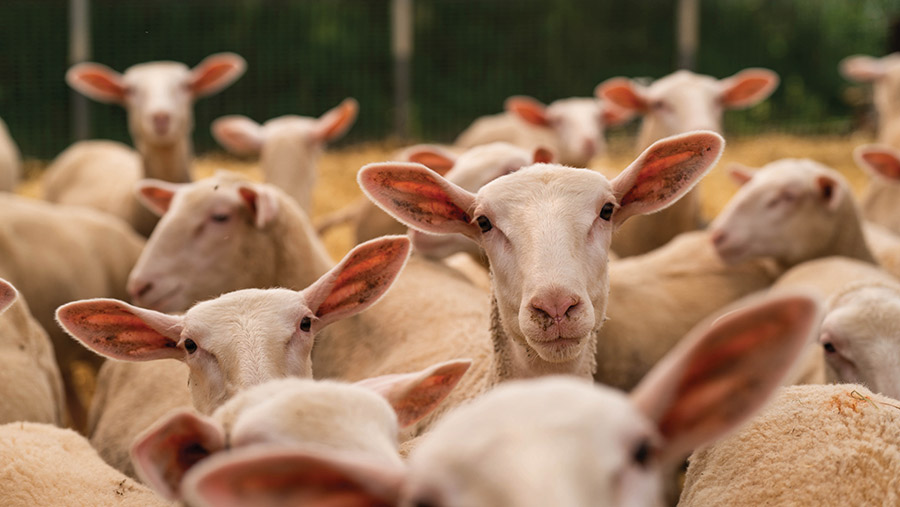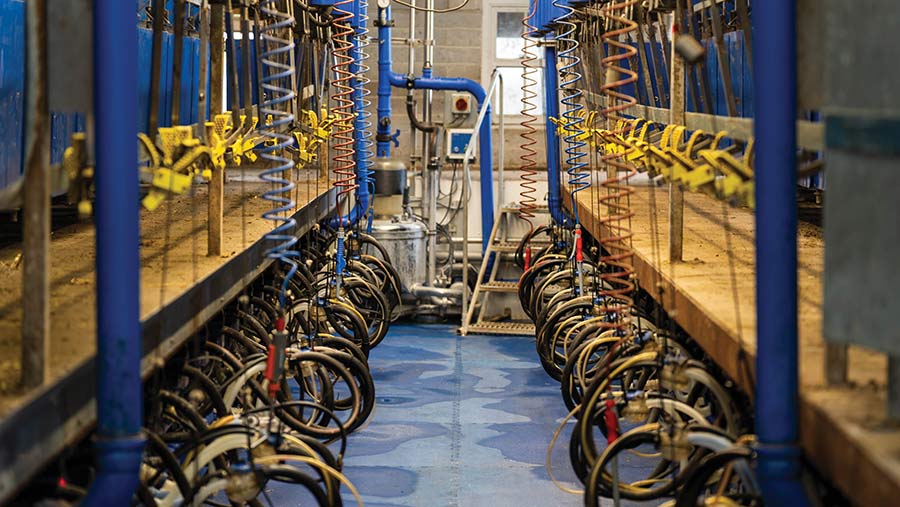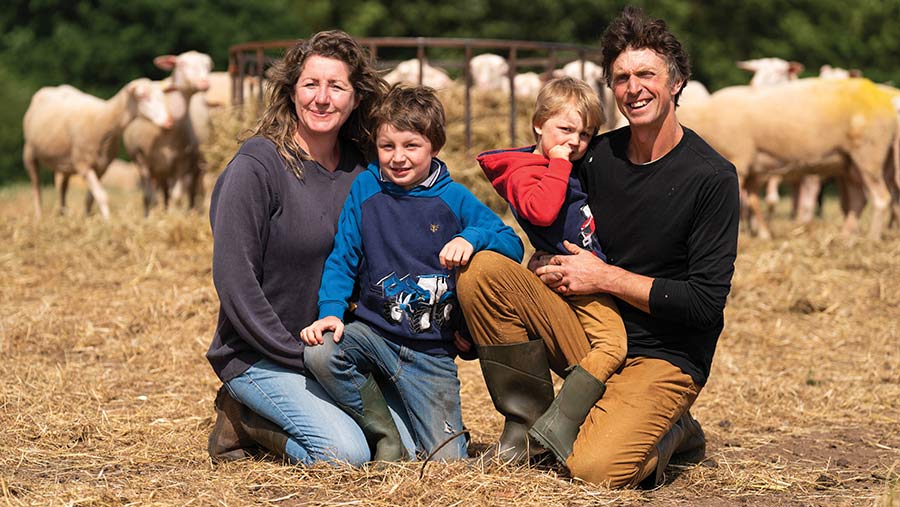Sheep dairy targets gross margin rise with twice-a-day milking
 © Emily Fleur
© Emily Fleur After trialling a more extensive, once-a-day milking system with their 300-head flock, Tom and Helen Garland are preparing to return to twice-a-day milking to increase gross margin by more than £200 a ewe each year.
The former Farmers Weekly Sheep Farmer of the Year finalists took on a new county council tenancy in 2020.
It was a big move for farmers who, earlier that year, had had to throw milk away when demand was severely reduced by the pandemic.
However, it offered them a stepping stone with more security than the shorthold tenancies and grazing agreements on which they had previously run their business.
See also: How a resilient sheep dairy farm overcame multiple setbacks
Farm facts
Lower Pilehayes Farm, Woodbury, Devon
- Seven-year county council tenancy, from September 2020
- 44ha (110 acres) with an additional 8ha (20 acres) rented
- Milking 300 Friesland cross Lacaune ewes – lambing indoors
- Milking 55 Dairy Shorthorn cows, calving all year round
- Supplying a mix of independent dairy customers directly
Since moving to Lower Pilehayes farm in April 2021 with 580 milking ewes, Tom and Helen have downsized their flock to 300.
With the farm lending itself to dairy cows, they have also established a 55-head pedigree Dairy Shorthorn herd in place of their hill ewes.
Milking routine
Using equipment from the sheep parlour at their old farm, Tom revamped the existing six-unit abreast parlour and began milking bought-in cows less than three weeks after they moved to the farm.
After a while, a necessary compromise was switching from milking the Friesland cross Lacaune ewes twice a day to once a day (OAD) through the DeLaval 36/36 herringbone parlour they had installed.
“We did a whole year of twice-a-day milking the sheep – similar to what we did at Burton Dairy Farm [but] with much more grazing, less TMR [total mixed ration].
“Winter was fine, but then we got into spring – cow numbers increased, we were lambing, and I was struggling to fit in four milkings a day, so I literally said one evening, I am not milking the sheep,” he recalls.
“We went to a low-input system and milked once a day – we’ve done that ever since. But we have been looking at the figures and I am going back on the plan because of the amount of milk we have lost in that period.”

© Emily Fleur
Yield hit
The drop in yield came as a surprise to Tom, having seen people switch to OAD milking with cows with less drastic results.
On twice-a-day milking, the ewes were producing 375 litres a head in an eight-month lactation.
On OAD, that dropped to 175 litres – less than half the previous yield – based on a diet of grass, silage and 2kg fodder beet, with free access to 27% molasses in the winter and 400g of an 18% blend in the parlour each day.
Tom calculates the cost of the extra production at £85 a head in running costs and additional bought-in feed.
He wants to avoid going back to the TMR system, but knows more concentrate will be required when ewes are outside.
To move back to twice-a-day milking, 150 ewes have been synchronised to lamb in mid-October.
At the end of February, another 150-head (any returns and all ewe lambs) will lamb, and they will also be milked twice a day until the end of May.
At this point, both groups will be moved to OAD milking and dried off in mid-August.
New genetics
The Garlands hope the system will give a balance between production and ewe health. Lacaune genetics have been introduced to the flock to help with this.
“We’ve gone down the Lacaune route to get a stronger sheep with a better udder,” says Tom.
“They’re a totally different sheep. We aim for five lactations, and we are strict on culling.”
Around 60 replacements are bred from ewe lambs put to purebred Lacaune rams each year and the ewes are put to a Texel or Charollais sire.
The continental-cross lambs have been sold privately at anything from two weeks old, but the plan is to return to a system of rearing most of the lambs, especially strong singles, from October until April, and target good prices at that time of year.
Reseeding
Soil conditions at the farm are in “fairly good heart”, but the grassland needs improving.
“We’re going through a whole system of reseeding because it wasn’t farmed for three years. There were no animals here at all – it was mown by a contractor and the grass was taken away,” Tom explains.
Last September, they direct-drilled 10kg/acre of a five-year ley into a tired sward and were fortunate to have rain soon after.
“It’s worked incredibly well: It has taken out some of the older grasses leaving us with a nice thick sward without us having to rip it up.
“We will try to do a couple more fields like that this year, but you’ve got to catch it right.”
Forage rye was grown on 10ha (25 acres), followed by peas and barley.
This will be foraged ahead of drilling a GS4 herbal ley as part of their Countryside Stewardship agreement. Rye will continue to be grown for zero grazing in early April.
Planning ahead
Improving the farmyard is an ongoing challenge to try to squeeze as much as possible into a small footprint.
“The cows are in an old 70-cubicle shed and we have put the sheep parlour in another existing shed. I have put polytunnels either side of the [sheep] parlour, so that we can hold 200 sheep one side and 100 the other.
“After we have done two winters, I know we can change things around to improve stock flow,” Tom says.
“With the two dairies, you have to allocate the right resources to each and planning ahead makes life easier.”
Tom Garland’s top tips for starting a sheep dairy

© Emily Fleur
- Find your market before you start milking. Having multiple markets can spread risk
- Visit farms to gain experience and research different systems
- Be realistic about what is involved: Ewes only milk for an eight-month lactation, and with lamb rearing, it can be quite intense labour-wise
- Communication with buyers is key and very different to a contract with dairy cows. You must produce milk at the right time for the right people and sometimes you have to bend over backwards to accommodate buyers
- Dairy sheep are not like normal sheep or milking goats either. They take a lot of management, and you have to know what they want and do a good job of them to get production.
- Dairy cattle experience is helpful
